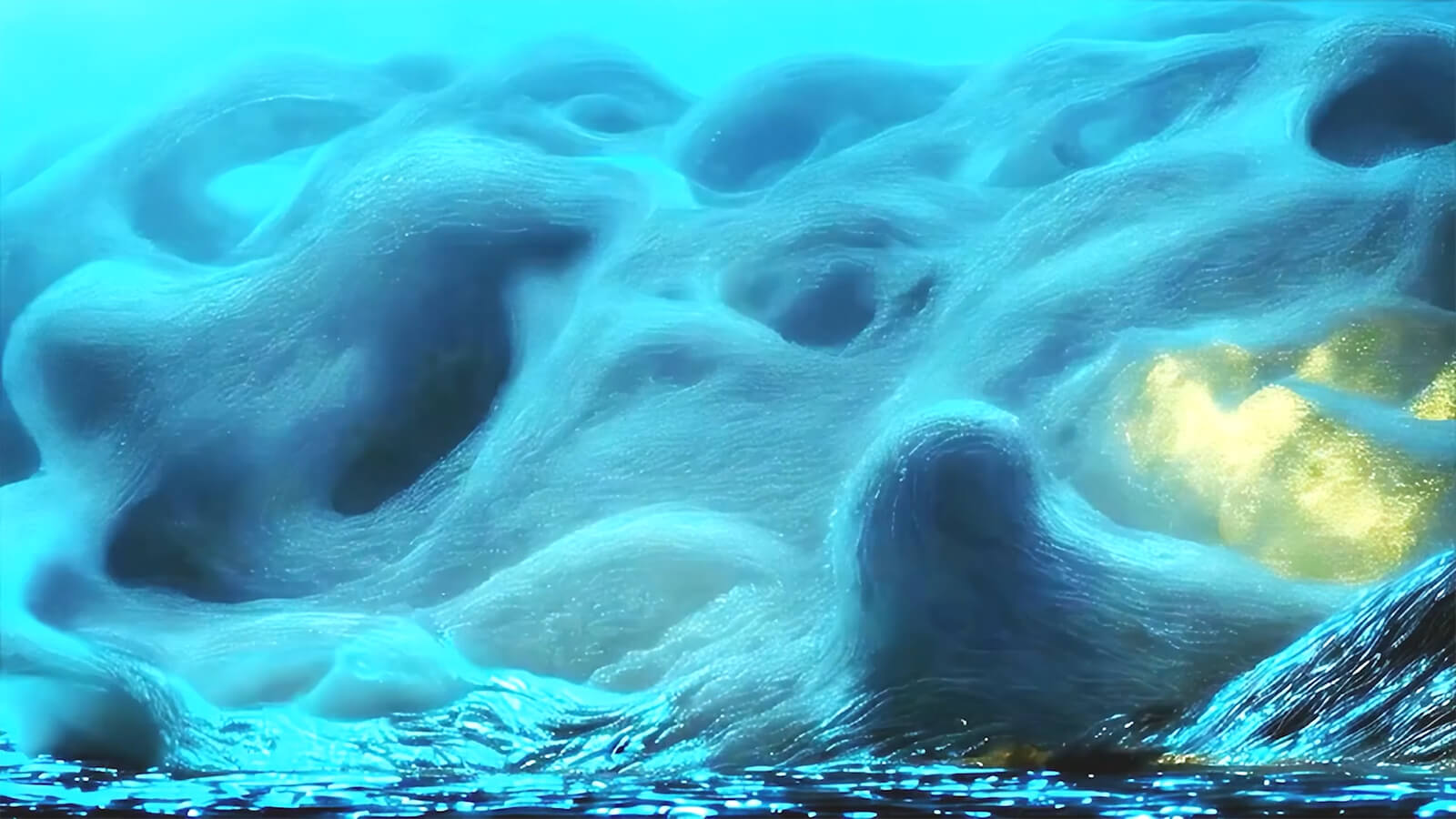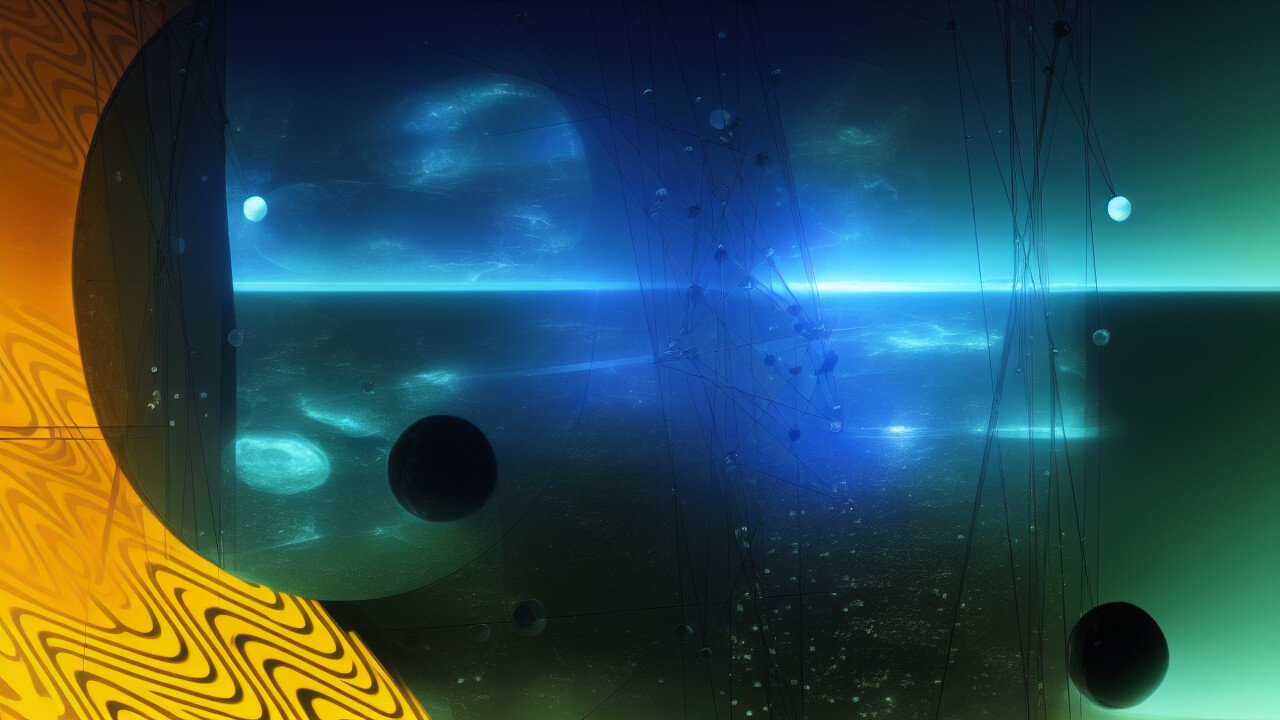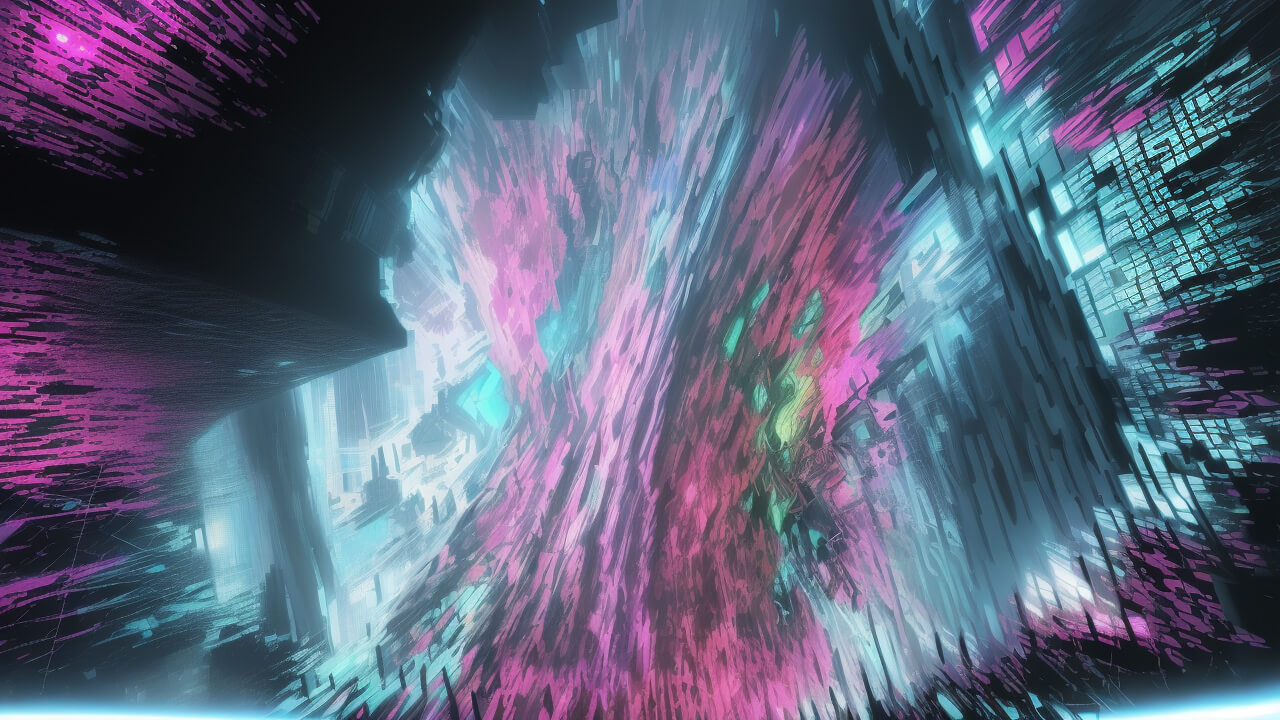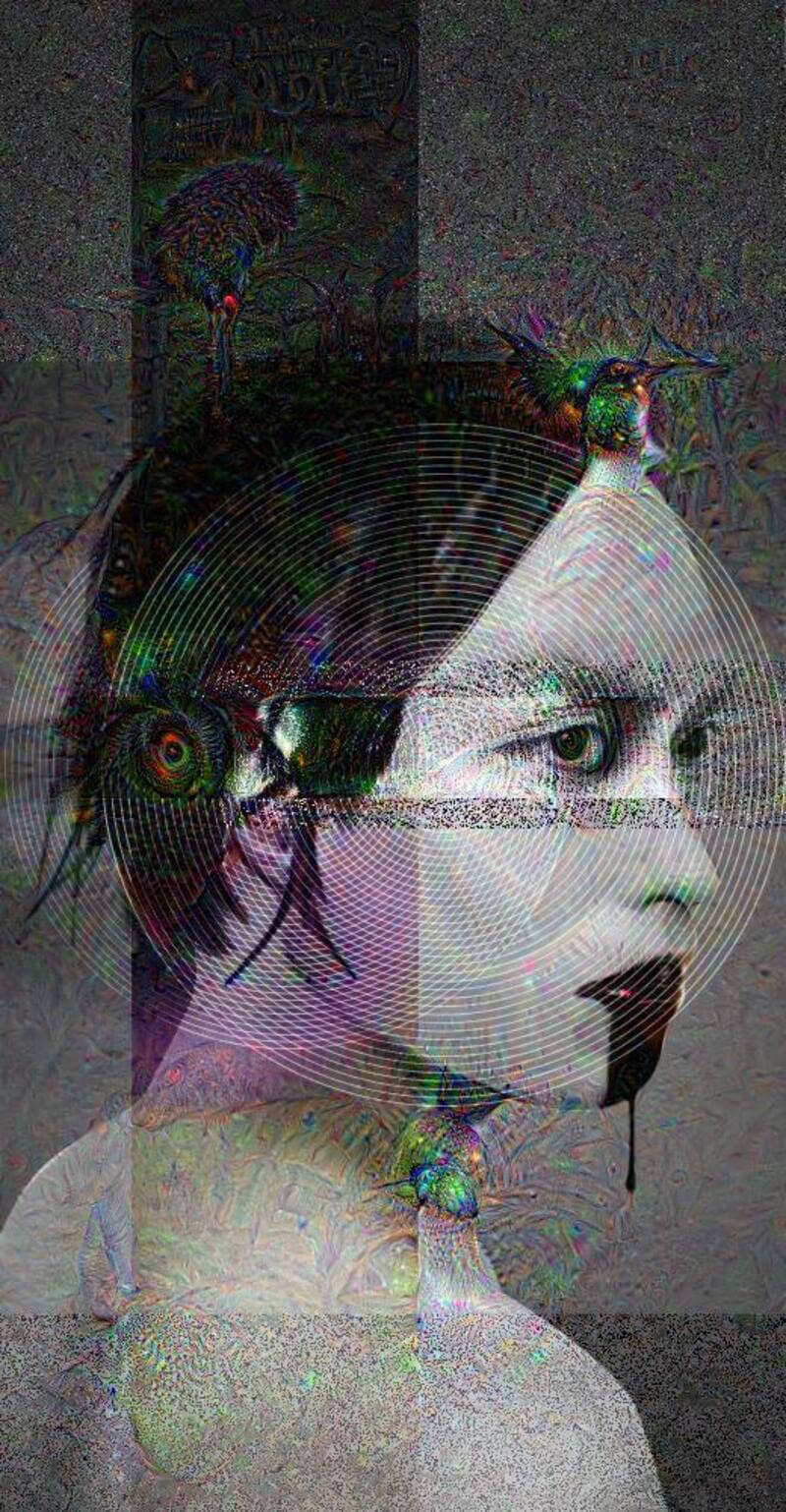The Japanese artist, composer and programmer Yousuke Fuyama’s artificial intelligence (AI) based artwork Land-Venus “La Faille de Signe” Self-Reconstruction was shown by Galerie Geek Art at STIR Gallery on January 27, during the opening of India Art Fair 2024’s Young Collectors’ Programme (YCP). Galerie Geek Art is a contemporary art gallery headquartered in Tokyo, Japan and New Delhi, India, established in 2019. It possesses a close focus on experimental and new media art practices from Asia. Their presentation of Land-Venus stole the show at the YCP opening, enthralling audiences as they came face-to-face with Fuyama’s fluid, amorphous forms. However, the projected video art piece that had visitors transfixed has a process that is as intriguing as the work itself and demands greater exploration. Fuyama spoke to STIR about how he activated AI to create Land-Venus, and how the piece relates to his work as a sound technician at a Japanese Aerospace research and development organization.
Fuyama worked with two AI models for Land-Venus “La Faille de Signe” Self-Reconstruction. He fed the first of these data, prompting it to generate visuals in response. This raw data that the artist fed to the model was an older music track by him, titled Land-Venus. The first model would produce imagery that would be interpreted as sound by the second model, after which the two would continuously try and interpret each others’ output, causing both the visuals and sound art that compose Land-Venus to mutate endlessly in response to one another. The text overlays that may be viewed in the video above are the second AI model’s reading of the visuals produced by the first. The video itself is a short recording of the process outlined above. The artist describes this process, telling STIR that it is “…similar to the model of an autonomous system, called autopoiesis (αὐτo- (auto-) ‘self’, and ποίησις (poiesis) ‘creation, production‘),” meaning a self-sustaining system that is capable of creating its own parts.

The artist has a provocative perspective on his role within the production process for Land-Venus. In his words, “The ‘seed’ that triggered this cycle is my musical self-expression (Land-Venus the song), which I created with a different intention in mind, and I threw it into this system like Shiva, who represents deconstruction and reconstruction.” Fuyama’s statement suggests a sort of reverse techno-religiosity: Here, the artist is a guiding force, overseeing the functioning of autonomous machines that do their best to respond to his impetus, in sharp contrast to the relationship that devotees traditionally engage in with the divine.
Beyond his music making, video art and AI art practices, Fuyama works to reduce and control noise and vibrations within aircraft. Discussing the relationship between Land-Venus and his aeronautical sound engineering work, he says, “For me, when it comes to the commonalities between my artmaking and sound engineering, broadly speaking, there is simply one point to mention: The recognition that a single discovery can have applicability across multiple domains.” Fuyama explains that aeronautical sound engineering focuses on the reduction of noise and “chaos”, however, the technological means to achieve this can also be used to amplify and diversify these elements, which can have great applicability within the arts.
…a single discovery can have applicability across multiple domains.
– Yousuke Fuyama, artist, composer and programmer
The audiovisual artist does not distinguish between his work within and outside the arts. He points to the increasing prevalence of AI-focused digital tools within scientific fields such as sound engineering and aeronautics, mentioning that they lead to optimisation and efficiency. “However”, as he says, “the very same AI technology can also be ‘misused’, that is, to generate chaos. Such ‘conscious misuse’ is a notable approach observed in various realms of art, particularly in new media art.” Owing to this, Fuyama feels that his twin identities, shaped by scientific inquiry and artmaking, are inseparable and compose a single process.
Returning to Land-Venus, the role of AI within the artwork goes well beyond what we are currently used to seeing in digital art spread across social media. Fuyama’s thoughtful approach to digital technology reveals more about AI than his own preoccupations as an artist or musician. Perhaps the work’s most compelling element is that it does not attempt to mask current-generation AI’s imperfections in prompt recognition, but rather leans into it, feeding it abstract data to begin its endless cycle of abstraction.
The 15th edition of India Art Fair, the leading platform showcasing contemporary and modern art from India and South Asia took place from February 1-4, 2024 in New Delhi. Click here to explore STIR’s (Strategic Media Partner with IAF 2024) highlights from the event.
This post was originally published on 3rd party site mentioned in the title of this site




